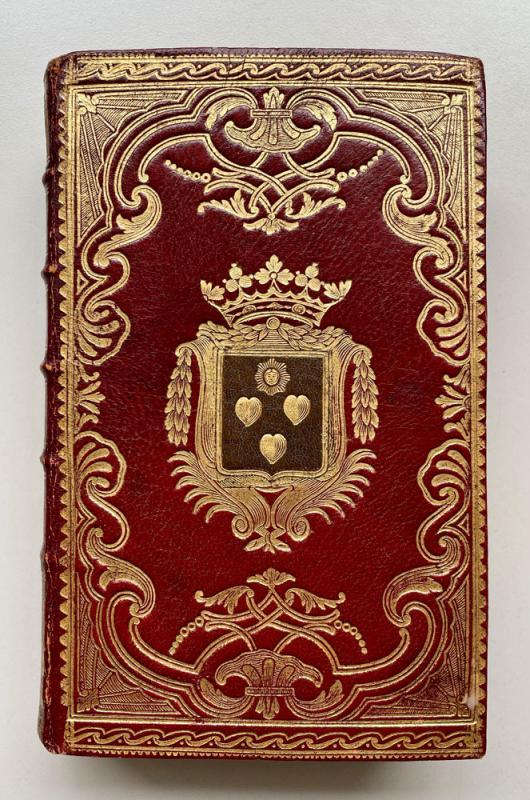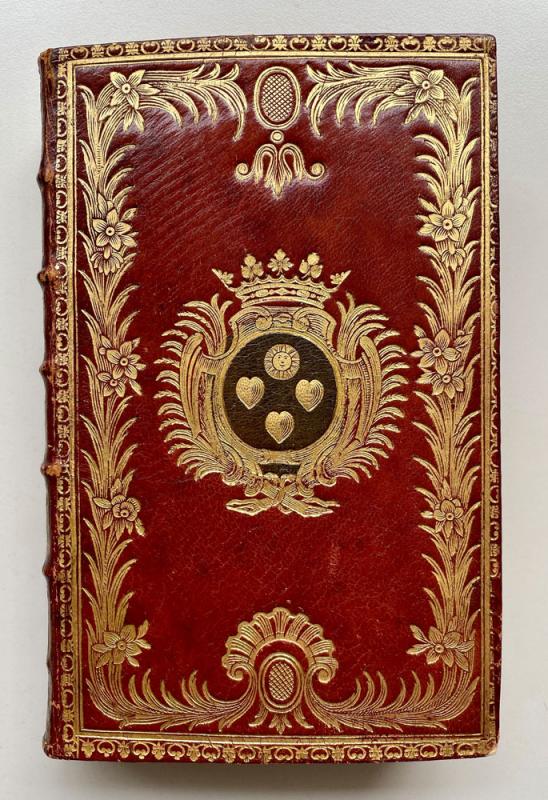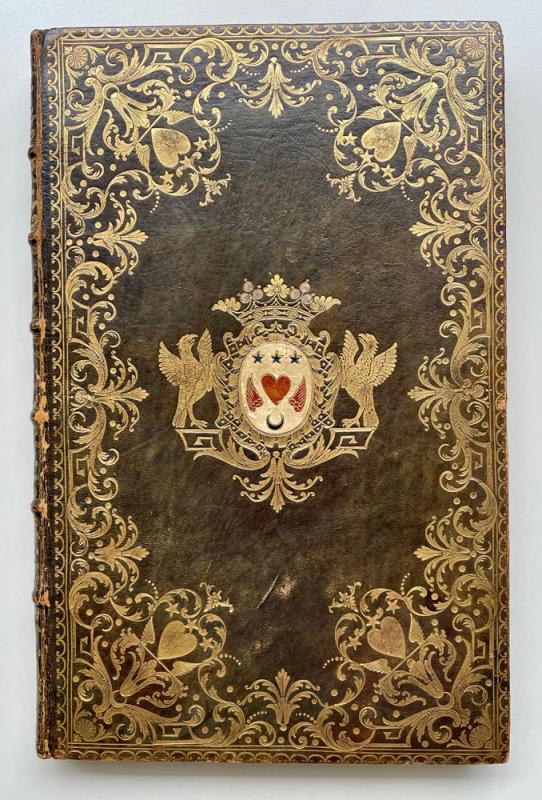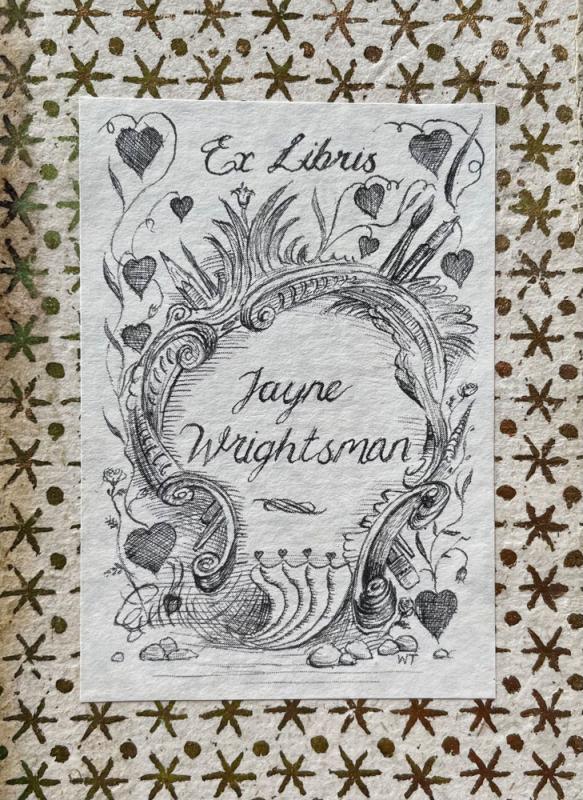
[Figure 1] Wrightsman bookplate, in: St. Teresa of Ávila, Le chemin de perfection (Paris, 1623). Donated by Mrs. Jayne Wrightsman in honor of Mrs. Annette de la Renta; PML 198351, gilt-paper front pastedown.
In the spring of 2019 former Morgan trustee Jayne Wrightsman bequeathed to the museum an exceptional collection of books bound for the highest echelons of eighteenth-century French society. This donation forms the core of the exhibition Bound for Versailles: The Jayne Wrightsman Bookbindings Collection, on view through January 30, 2022. Mrs. Wrightsman developed a keen ability to judge the historical and material quality of bookbinding and understood how binding decoration was integrated with the larger context of French decorative arts. The Wrightsman collection preserves the work of the artisan binders (male and female) at the workshops of Luc-Antoine Boyet (1684–1733), Antoine-Michel Padeloup (1685–1758), Nicolas-Denis Derome (1731–1790), and many others, including the relieurs du roi, or royal bookbinders, throughout the eighteenth century.
In tandem with her interests in the provenance (ownership history) of the books and their bespoke bindings, Wrightsman also had a fondness for hearts and would often buy (or was gifted) a binding due to the use of the heart as a decorative motif. Her own bookplate, or ex libris (“from the books of”) was designed with heart-shaped ivy leaves surrounding the central cartouche. The bookplate is signed at the bottom right by the unidentified designer, WT.
Collecting based upon a singular decorative motif allowed Mrs. Wrightsman’s collection to become a little more broadly representative of contemporary decorative bookbinding practices rather than focused solely on the books owned by aristocratic society. Below is a brief sampling of a few of the bookbindings in the Wrightsman collection that carry a heart motif. The heart appears in the original owner’s heraldic coat-of-arms, usually placed in the center of the covers, as a symbolic element of love or friendship, or purely for decorative purposes.
The coat-of-arms of the Amelot de Chaillou family contains three hearts and a sun. Mrs. Wrightsman’s collection contains ten volumes from this family. Both of these bindings are covered in red goatskin (morocco) leather, with green leather inlays with the Amelot de Chaillou armorials, and then decorated with gilt border plaques created by Pierre-Paul Dubuisson (active 1746–1762), whose bookbinding workshop was likely continued by his widow, Elisabeth-Magdeleine Saillard (d. 1777).
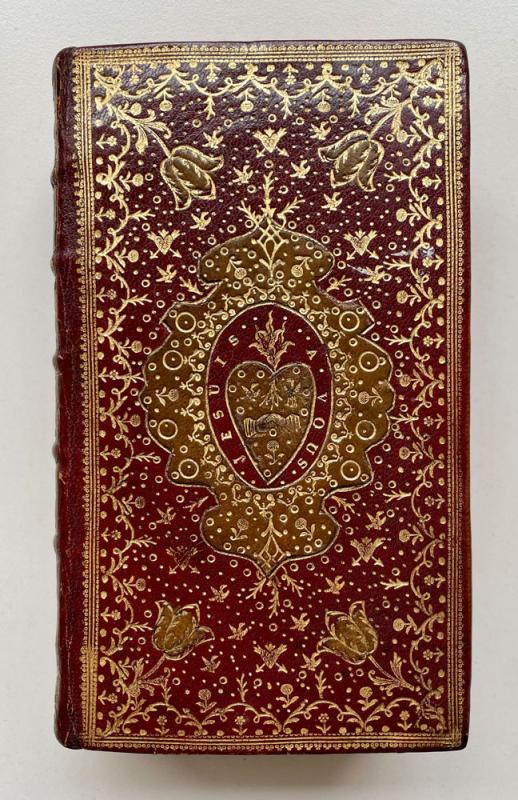
[Figure 4] Red and green goatskin, gilt tooled, with central heart tooled “Je suis a vous,” on: Eucologe, ou, livre d’église a l’usage du diocese de Paris (Paris, 1782). Donated by Mrs. Jayne Wrightsman in honor of Mrs. Annette de la Renta; PML 198311, front cover.
This small devotional book is decorated with an almost excessive amount of gilt-tooling, including flowers, leaves, birds, clasped hands, and hearts. The central heart bears the gilt inscription, Je suis a vous, or “I am yours,” suggesting that the volume was a love token. The clasped-hands motif also often signifies friendship or love. The craftsperson or workshop responsible for this binding has not been identified.
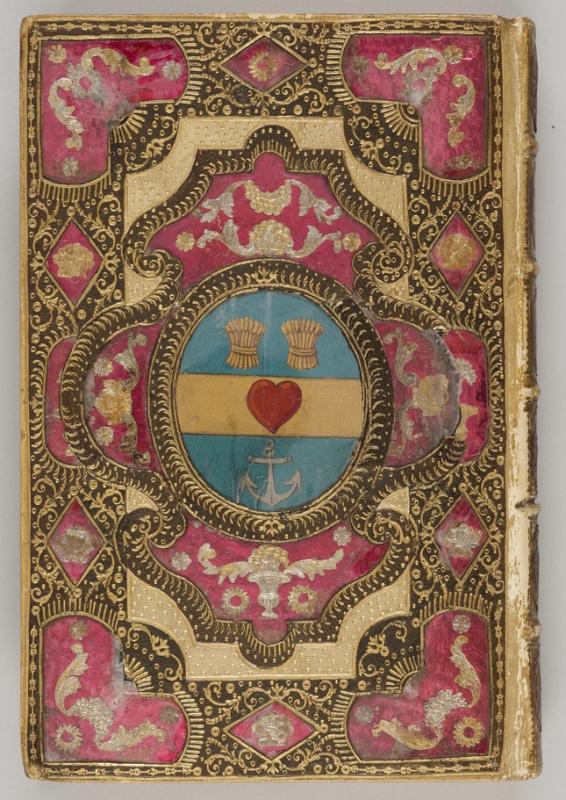
[Figure 5] Mosaic of cream and black goatskin with individual gilt tooling and gold, silver, and red foil under mica, on: Almanach royal, année M. DCC. LXV (Paris, 1765). Donated by Mrs. Jayne Wrightsman in honor of Mrs. Annette de la Renta; PML 198429, rear cover.
This elaborate decorated binding was produced in the workshop of either Nicolas-Denis Derome (1731–1788), Pierre-Paul Dubuisson, or Jean Delorme (d. 1777?). The tools used to decorate this binding have been attributed to all of these workshops and could have been passed down or shared among them. The central armorial (two sheaves of wheat, heart, and anchor) belongs to Pierre-Louis-Paul Randon de Boisset (1708–1776). The decorated binding is almost a multi-media collage, with windows in the goatskin cover cut away to reveal colored foils and armorial, all of which are protected by thin sheets of mica.
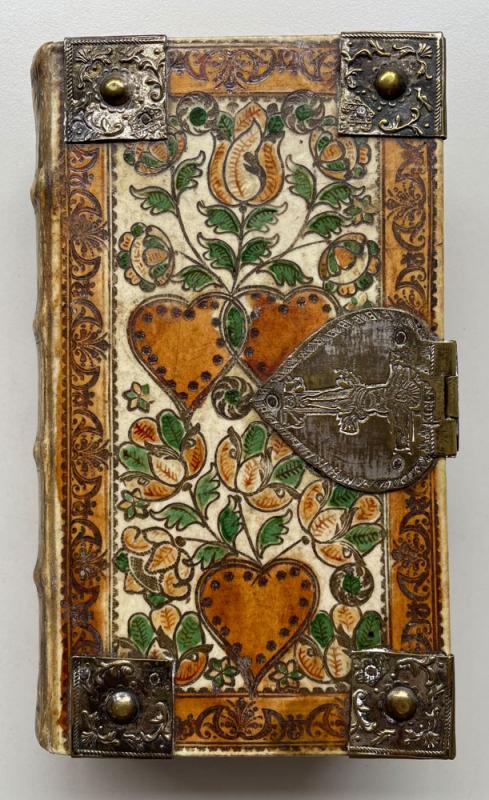
[Figure 6] Painted and stamped parchment, on: Neu-vermehrtes und verbessertes Magdeburgisches Gesang-Buch (Magdeburg, 1753). Donated by Mrs. Jayne Wrightsman in honor of Mrs. Annette de la Renta; PML 198340, front cover.
This is one of the few German books in the Wrightsman collection. The wooden covers are wrapped in parchment and then stamped and painted with hearts and flowers. This type of painted-parchment binding is commonly referred to as a Bauerneinband, or “farmer’s binding,” although the decoration really has nothing to do with farmers as producers or owners of these books. Even the metal clasp, with a representation of the Crucifixion, is heart shaped.
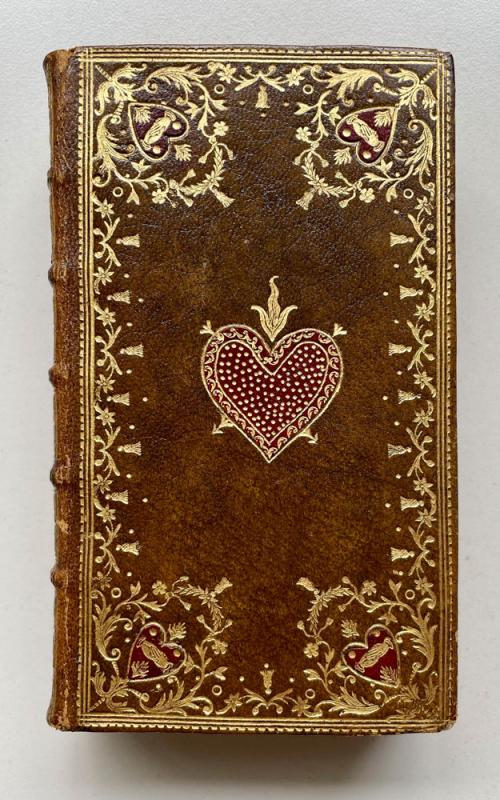
[Figure 7] Green goatskin with red goatskin heart, with individual gilt tooling, on: St. Teresa of Ávila, Le chemin de perfection (Paris, 1623). Donated by Mrs. Jayne Wrightsman in honor of Mrs. Annette de la Renta; PML 198351, front cover.
The heart-motif was frequently used on Christian/religious books to symbolize the devotee’s love of Christ (like the heart-shaped clasp above). The hearts in the center and corners of the covers are in red goatskin and are augmented with a flame/fire motif, which typically signifies Christ’s love. Several of the individual tools on this binding belonged to the workshop of Louis Douceur (active 1721–66), including the symmetrical floral swag used along the sides of the border.
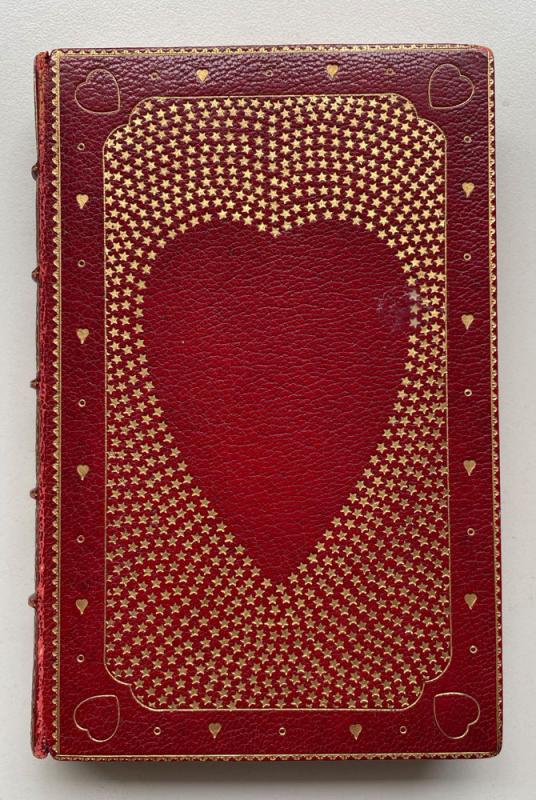
[Figure 8] Matthew Arnold, Selected Poems (London, 1900). Donated by Mrs. Jayne Wrightsman in honor of Mrs. Annette de la Renta; PML 198365, front cover.
This is one of the few modern (twentieth-century) bindings in the Wrightsman collection and likely only acquired because of the decorative heart motifs. The binding was produced in the early 1900s by the London firm of John Ramage and Company. Ramage was one of the binderies working to restore the fine hand-craft of bookbinding, in an era when that process was increasingly mechanized.
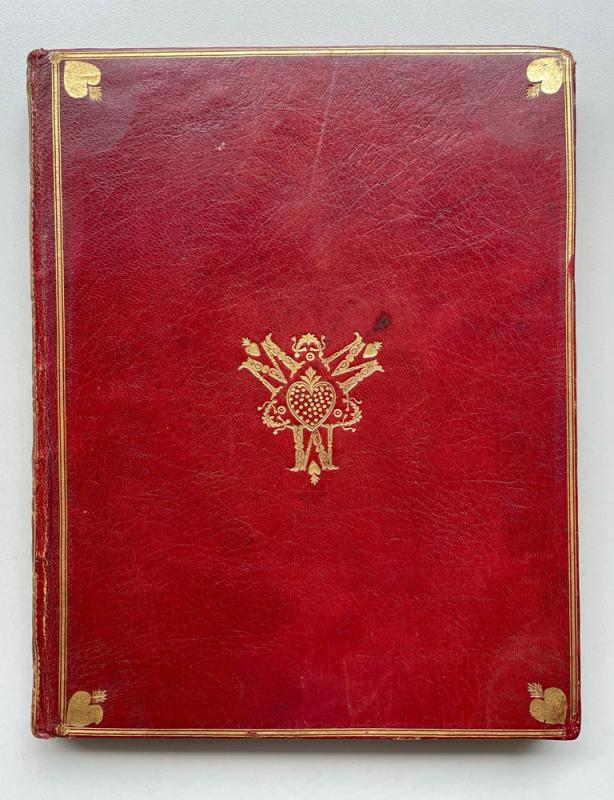
[Figure 9] Red goatskin with individual gilt tooling, on: Les enfans de l’amour et de l'amitié, ou les folies raisonnables, manuscript (France, 1771). Donated by Mrs. Jayne Wrightsman in honor of Mrs. Annette de la Renta; MA 23400, front cover.
The heart/flame motif on this binding likely represents the love of a family, the love between parents and their daughter. The text is a series of plays and vaudeville pieces evidently performed at special occasions held for the Monet family, including a feast in honor of Monsieur Monet at Picpus on May 1, 1771, and another for Madame Monet held on July 19, 1771. Thus, the three M’s on the cover represent the three Monets: Monsieur, Madame, and Mademoiselle.
[Figure 10] Green goatskin with individual gilt tooling and colored-goatskin armorial, on: Jacob de Gheyn, Waffenhandlung von der Rören, Musquetten, undt Spiessen (Grauenhagen, 1608). Donated by Mrs. Jayne Wrightsman in honor of Mrs. Annette de la Renta; PML 198443, front cover.
The coat-of-arms on this binding belongs to Barthélémy-François Thoinard (1683–1752), adviser to the Parliament of Paris and tax collector (fermier général). The decorative binding was produced by Nicolas-Denis Derome or Pierre-Paul Dubuisson, who not only included Thoinard’s armorial in the center of the cover, in colored- and painted-goatskin leathers, but also included enlarged, gilt-tooled versions at the four corners of the cover and the spine of the volume.
IMAGES
Author, figures 1–4, 6–10, Janny Chiu, 2021, figure 5
John T. McQuillen
Associate Curator, Printed Books & Bindings
The Morgan Library & Museum

